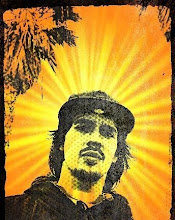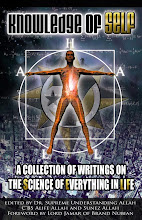
CANADA’S MILITARY PLOTS "WAR CRIMES" AGAINST INDIGENOUS PEOPLE
Mohawk Nation News
March 27 2007
It looks like the psychotics from the U.S. have hijacked Canadian policy taking Canada back to medieval blood lust. A 250-page field manual on counterinsurgency is being put out by Canada's Department of National Defense DND for its soldiers and officers. Jon Elmer of Global Research wrote on March 25, 2007, about these new methods of fighting insurgents like the "Taliban", the "Chechnyans" and the "Mohawk Warrior Society". Wait a minute, that’s us!
Let’s not kid ourselves. The main purpose of an army is to shoot and kill. Does Canada ’s Parliament or the Canadian people know about this genocidal action that is being done in their name? Since when is it legal to make plans to attack us?
If the DND see us as foreign insurgents, they obviously recognize our independent nationality. So when did they attempt to negotiate with us on a nation-to-nation basis? Under international accords that Canada has signed all countries must resolve differences by diplomatic means. War and the use of weapons to dominate are illegal.
Why are weapons being pointed at us? We are defenseless. Why are we being compared with the Taliban who have rockets, artillery and modern weapons to blow up U.S. , Canadian and British tanks that are inches thick?
These infiltrators and hijackers of Canadian institutions are attempting to break the old treaties of peace between us. Our historic alliances are well documented.
Certain individuals acting on behalf of the multinational corporations and banks want to send in the military to kill us and complete the theft of our land. These are worth billions in real estate development and extraction of resources. People and resources are not the property of multinational corporations and banks. Slavery was declared illegal 150 years ago. They think every person who is different is an enemy that they can spy on, create problems for and eliminate.
Public Security Minister Stockwell Day and Prime Minister Stephen Harper have to be brought before the International Criminal Court in The Hague to be prosecuted for proposing war crimes against us. We want to take our complaints to the Mohawk Nation, to the Confederacy, to the Canadian people, to the United Nations and to the world.
We are being called "terrorists". We see a lot of people being killed in Afganistan , Iraq and elsewhere. Are they planning to bring this kind of violence here?
We are always ready to talk with the colonial governments even when they put a gun to our heads. For 500 years we have extended our hand of friendship to them. We believe that people should live in peace and friendship and to look at people as equals. The majority of Canadians want to learn about peace from us and to understand democracy better. Canadian Governor General Michaelle Jean, where are you? You are evading your duties to us.
How did these misguided sickos manage to infiltrate the DND? They are not following the legal agenda set by the Canadian people. They want peace.
We are trying to stop the subversion of law and order, to get Canada to obey its own laws, agreements, promises, treaties, laws of nations and the Charter of the United Nations. We have a legitimate government. We are not a line of ducks to be shot at in the amusement park.
The manual says, "Insurgent wars are characterized by their tendency to be local and often popular movements, rather than the traditional military conflicts between states. This type of irregular warfare has confounded U.S. and NATO forces in Iraq and Afghanistan respectively" and "successes are few and far between". The U.S. and Canadian armies need practice so they are bringing the same blood bath here. They want more chances to reach for their guns and riot gear to confront us. Does nothing embarrass them?
We can tell this use of us as targets has already started. A few months ago Tyendinaga was suddenly swarmed by a long line of army trucks filled with troops. They claimed to be lost! Yeh!
In 1939 Europe saw the result of excessive militarism. It caused a war in which over 60 million were killed. Now these kinds of men want to "goose step" into our communities. They’re mesmerized by the movies glamorizing mercenary killings and the "History Channel’s" portrayal of Hitler, the Nazis and the Fascists in Europe and the U. S.Gen. David Petraeus is the original author of the manual being used to divert the Canadian military from its original protective role. He took command of U.S. forces in Iraq in early 2007. Did his methods work? No way! Violence breeds violence. Yeh! Now they’re trying to get out because they’re getting their asses kicked. The average U.S. citizen has had enough. They don’t want anybody killed on any side. This Svengali has seduced the gullible minds at DND who can apply his failed schemes in Canada and elsewhere.
Maj. D.J. Lambert, the lead author of the DND version, points out that "Canadian Forces are actively engaged in various levels of confrontation with at least three ongoing insurgencies -- in Afghanistan , in Haiti and with domestic indigenous organizations in Canada , such as the Mohawk Warrior Society". Government policy has pushed our people into poverty, starvation and death in the streets of Winnipeg and other Canadian cities. Why are they going after the weak?Canada calls us their "citizens" but treat us like foreign insurgents. They are working against the Supreme Court of Canada which has told them time and time again they must treat Indigenous People with respect. DND covert actions are undermining this relationship by treating us as enemies.
The manual states, "Indigenous resistance in Canada are insurgencies because they are animated by the goal of altering political relationships with both the Canadian government and at the local level -- within indigenous reservations themselves -- "through the threat of, or use of, violence". We want to maintain the true relationship between us and the colonist as one of friendship. This definition of insurgency is so broad that any democratic action qualifies. We have made no threat of violence against the Canadian state. "Canadian Forces have been used by the federal government in high-profile land confrontations with indigenous communities and protestors in standoffs with the Mohawks of Kanehsatake in 1990 and with the Ojibway at Ipperwash in 1995". According to the DND, the military were at Ipperwash. This means the sniper who killed Dudley George might have been a soldier and not an Ontario Provincial Policeman. Is this why Corporal Deane and two other OPP key witnesses died in mysterious car crashes when they were just about to appear as witnesses at the Ipperwash Inquiry?
In our peaceful demonstrations at Kanehsatake, Gustafsen, Ipperwash, Six Nations, Grassy Narrows , and other places our legal rights were violated. Some lost their lives. The inquiries prove that. We know they want to provoke a confrontation to justify killing us. We won’t give them that.
In the January 12th 2004 covert operation at Kanehsatake, the government sent in heavily armed mercenaries to knock out the citizens’ police commission. The disinformation campaign made the weapons look like a Mohawk arsenal when in fact they were all supplied by the federal government.
"Canadian generals such as Leslie, Chief of Staff Rick Hillier and retired Maj. Gen. Louis MacKenzie have been outspoken critics of the Canadian military as merely a neutral middle-power and "blue-helmeted" peacekeepers". This is what the Canadian public wants! The Canadian army is preparing to become the aggressors delivering death sentences to defenseless civilians, including infants and children, without so much as a charge or trial. These overgrown school yard bullies are still trying to play "paint ball" except they want to kill real people. Why should Canadian taxpayers pay for these "recreatech parties"?
Canadian Forces will leave Afghanistan in February 2009. "Let's not kid ourselves," Gen. Leslie said. "The enormous resources invested by the government in the transformation of Canada 's armed forces are clearly not for Afghanistan alone. It is logical to expect that we will go somewhere fairly similar to Afghanistan and do much the same sort of activity." With the whole world trying to find peace, where does he expect to go?
Stockwell Day, the Minister of Public Security, is a Pentecostal minister. He is known as a "Pharisee", one who poses as a minister. His proposal to kill off Indians is contrary to the beliefs he espouses. He studies the Bible just like George Bush and Condoleeza Rice, who are psychopaths, liars and killers. They have no human feelings. As soon as their prayers are over, they have no qualms about ordering their military machines to go on bloody rampages.
If they kill us, we want the whole world to know they carried out premeditated murder of innocent people. The war games have to stop. We have to look out for soldiers in our backyards or their overhead choppers. They’ve been caught sniffing around our communities. We are asking all peace loving people worldwide to send your protests about this war mongering and targeting of Indigenous people to the Canadian government [harper.s@parl.ca], the Governor General [gg@gc.ca], the Queen [press@royalcollection.org.uk] and the Canadian military [http://www.forces.gc.ca/].
Kahentinetha Horn
MNN Mohawk Nation News
For updates, workshops, speakers, to sign up, go to http://www.mohawknationnews.com/
Sign the Women Title Holders Petition.
-PEACE-
Also, check out an article entitled "Canada's Counterinsurgency Strategy" from Znet: http://www.zmag.org/content/showarticle.cfm?SectionID=102&ItemID=12444
Also, check out an article entitled "Canada's Counterinsurgency Strategy" from Znet: http://www.zmag.org/content/showarticle.cfm?SectionID=102&ItemID=12444



























